We explored Angkor Wat’s outer enclosures in the last two posts, Angkor Wat One, and Angkor Wat Two. Now we’ll approach its center.
1. After you walk around the stone carvings on the walls that surround the central towers, a staircase takes you towards the center. There are now fewer sculptures–you’re leaving worldly affairs and approaching more mysterious powers.
2. Some think that Angkor Wat might be a mandala or yantra–a yogic form of the emanation of the universe. A walk towards the middle may be a spiritual journey–if you can ignore the throngs of tourists.
3. But mandala means circle in Sanskrit, and Angkor Wat is square. The Indian tradition of Vastu sees Hindu gods in the different squares of a building. Scholars don’t agree about the model that best fits the temple’s plan, but you’re probably traversing a map of the universe.
4. The huge central terrace is supposed to be Mt Meru, the mythical center of the Hindu and Buddhist universe.
The stairs are very steep, like they are in many Mayan pyramids. You’re ascending to the world of the gods. Sadly, people are allowed only thirty minutes up there these days. The line can be as long as the cosmic snake.
5. Watch the bats when you get to the top. One urinated in my face as soon as I entered. But hey, the Chinese make images of bats into good luck charms because fu means both bat and blessing. I would have enjoyed a kiss from an apsara more though.
6. There are four large indented areas on the terrace, around the central tower. They might have represented oceans around Mt. Meru.
7. There are ornate walkways between the four oceans. Maybe priests coordinated processions towards the central tower–each coming from the four cosmic directions, chanting and burning incense.
8. The center room once housed a Vishnu statue, but it was walled up when Angkor Wat was converted into a Buddhist temple. There’s now a shrine in front of each side.
9. For me, the ornate architecture, the languages of tourists from around the globe, the civility of Cambodians worshipping, and the breezes blowing through the window slots blended into a paradise of all the world’s cultures shining on each other, in harmony with nature. Even the bats were beautiful now.
10. After the wars and succession crises that followed Angkor Wat’s construction, a new king, Jayavarman VII, built on a scale that was many times grander. Hard to believe. More posts on other great Khmer monuments will follow. Hold onto your lower jaw.
Angkor Wat has many facets, and you can spend years studying it. Vittorio Roveda did–he’s an Italian geologist who changed careers and got a PHD in Angkor Wat’s carvings. He wrote several books about Angkor. His picture is on the inside cover of Sacred Angkor–you see the seventy-year old riding a motorcycle through the Cambodian countryside with a big smile. Is this a cool guy or what?
You can see roots of Angkor Wat in an earlier Cambodian culture called The Funan, and in a society that followed the Funan called the Chenla.
You can also see amazing developments in Thai art in Sukhothai.

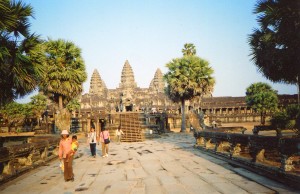
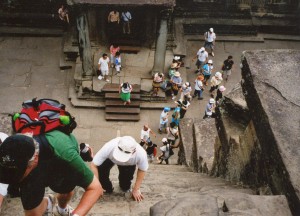
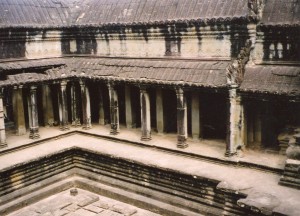
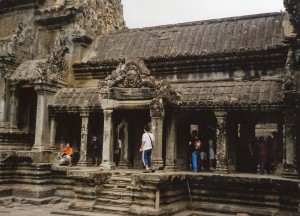
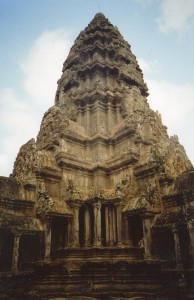
Comments on this entry are closed.